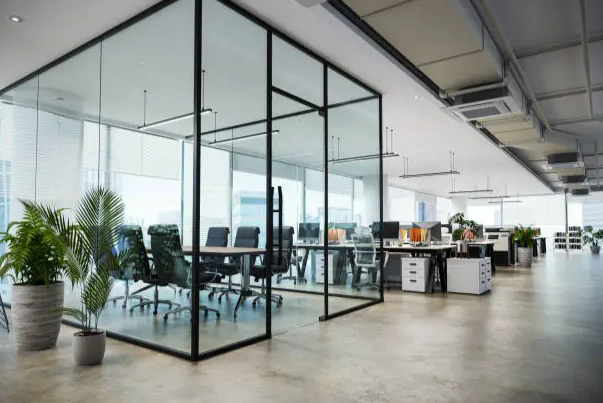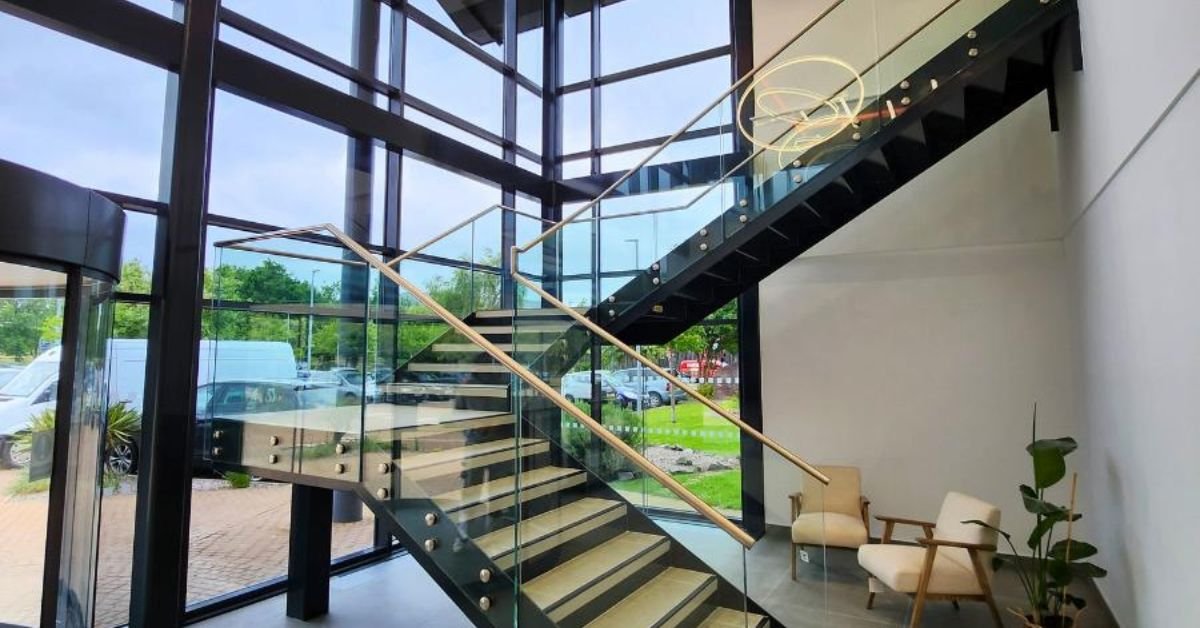Choosing the right modern office furniture is essential for creating a productive and aesthetically pleasing work environment. Whether you’re outfitting a corporate office, designing a home office, or selecting school furniture, the pieces you choose should be functional, stylish, and conducive to comfort and productivity. Modern office furniture goes beyond just desks and chairs—it includes everything from ergonomic seating to office sofas, workstations, and storage solutions. This article explores the key factors to consider when selecting modern office furniture to help create an efficient and comfortable workspace.
1. Ergonomics and Comfort
One of the most critical aspects of modern office furniture is ergonomics. Ergonomically designed furniture is essential for promoting good posture, reducing the risk of injury, and enhancing comfort, especially during long hours of work. When choosing office chairs, desks, and even home office furniture, it’s important to consider how these pieces will support your body.
Features to look for:
- Adjustable chairs: Look for chairs with adjustable seat height, armrests, and lumbar support to ensure comfort for different body types.
- Sit-stand desks: These desks allow users to alternate between sitting and standing throughout the day, which can reduce fatigue and improve posture.
- Proper desk height: The desk should be at a height that allows your elbows to rest comfortably at a 90-degree angle when typing, with your feet flat on the floor.
- Supportive seating: If you need to furnish a common area or waiting room, consider comfortable office sofas that offer proper back support.
By prioritizing ergonomics, you can create a workspace that minimizes physical discomfort and boosts overall productivity.
2. Aesthetic Appeal and Modern Design
Modern office furniture typically emphasizes clean lines, minimalist designs, and a sleek aesthetic. When selecting furniture, it’s important to strike a balance between style and functionality. The right furniture can enhance the visual appeal of your workspace, creating an environment that feels organized and professional.
Design trends to consider:
- Minimalism: Modern furniture often has simple, clean designs without excessive ornamentation, making the workspace look sleek and uncluttered.
- Neutral color palettes: Consider using neutral colors like white, black, gray, or earthy tones for a professional look. These colors are easy to pair with accent pieces or art to add personality to the space.
- Mixed materials: Modern designs often incorporate a mix of materials such as metal, glass, and wood. For example, you might choose a wooden desk with metal legs or an office chair with a mesh back and leather seat for added comfort and style.
For a home office, the aesthetic should complement the rest of your home decor while still maintaining the functionality needed for work. For corporate offices, a cohesive design across workstations, conference rooms, and reception areas can contribute to a professional image.
3. Versatility and Adaptability
In modern work environments, flexibility is key. Offices and classrooms need to accommodate different types of work, from individual tasks to group collaboration. Modern office furniture should be adaptable to suit various functions, whether you’re creating a space for quiet concentration or team meetings.
Features to consider:
- Modular furniture: Modular desks and seating can be easily rearranged to create different configurations for various tasks. This is particularly useful in collaborative workspaces or school furniture settings, where the room layout may need to change regularly.
- Multi-functional pieces: Look for furniture that can serve multiple purposes. For instance, storage units can also double as seating in some cases, or desks can include integrated shelving or drawers for added functionality.
- Compact designs: In smaller offices or home workspaces, compact furniture is essential. Desks with built-in storage or foldable pieces can help maximize space without sacrificing utility.
For home offices, versatile furniture is especially important if the room serves multiple functions, such as a guest room or living area.
4. Durability and Material Quality
Investing in high-quality modern office furniture ensures that your pieces will last for years to come. Furniture in office spaces often experiences heavy use, so durability is key to avoiding frequent replacements and repairs. When choosing furniture, pay attention to the materials and craftsmanship.
Materials to prioritize:
- Solid wood or metal: These materials are highly durable and can withstand daily wear and tear. Metal frames or legs can also provide additional stability for desks and chairs.
- High-quality upholstery: For office chairs and office sofas, choose materials that are easy to clean and resistant to wear. Leather, faux leather, or high-performance fabrics are popular choices for upholstery in modern office settings.
- Tempered glass: For a more contemporary look, consider desks or tables with tempered glass tops, which are both stylish and durable.
Durability is particularly important in high-traffic areas, such as reception or lounge areas, where office sofas or chairs will see regular use by employees and visitors.
5. Storage and Organization Solutions
A cluttered workspace can lead to decreased productivity and increased stress. Modern office furniture often includes built-in storage solutions that help keep the workspace organized. Whether you’re outfitting a corporate office or setting up a home office, having enough storage for paperwork, office supplies, and personal items is essential.
Storage options to look for:
- Desks with built-in drawers: These desks can help keep your workspace tidy by providing convenient storage for pens, notebooks, and other supplies.
- Filing cabinets: A well-organized filing system is crucial for maintaining important documents. Look for filing cabinets that can be easily integrated into your office space, or opt for mobile cabinets that can be moved as needed.
- Shelving units: Floating shelves or bookcases can provide additional storage without taking up too much floor space. These are ideal for storing books, awards, or decorative items that enhance the workspace’s aesthetic.
For home office furniture, look for pieces that offer hidden storage to keep the space from looking cluttered. For school furniture, consider desks and storage units that encourage students to stay organized and maintain a tidy workspace.
6. Sustainability and Eco-Friendliness
As more businesses and individuals prioritize sustainability, eco-friendly modern office furniture has become an important consideration. Choosing furniture made from sustainable materials or that is manufactured using environmentally responsible processes can help reduce your carbon footprint and contribute to a healthier planet.
Eco-friendly options to consider:
- Recycled materials: Look for furniture made from recycled or upcycled materials, such as reclaimed wood or recycled plastics. Many modern manufacturers now offer eco-friendly furniture options that don’t compromise on style or quality.
- Sustainable wood: Choose furniture made from certified sustainable wood sources. This ensures that the wood was harvested responsibly, helping to reduce deforestation.
- Low-VOC finishes: Furniture finishes can sometimes release harmful chemicals into the air. Opt for furniture with low-VOC (volatile organic compounds) finishes to ensure better indoor air quality.
Choosing sustainable furniture options can help your office align with broader corporate social responsibility goals and appeal to employees and clients who prioritize environmental sustainability.
7. Customization Options
One of the great advantages of modern office furniture is the ability to customize pieces to fit specific needs and preferences. Customization allows you to create a workspace that reflects your brand’s identity or your personal style while also meeting practical requirements.
Customization ideas:
- Adjustable desks and chairs: Choose furniture that can be customized to fit different body types and preferences. Height-adjustable desks and chairs are particularly useful in shared workspaces or hot-desking environments.
- Color schemes: Customizable color options allow you to match your office furniture to your brand’s colors or the overall design aesthetic of the space.
- Bespoke storage solutions: If your office or home office has unique storage needs, consider working with a manufacturer that offers bespoke storage solutions tailored to your specifications.
Incorporating personalized furniture can make the workspace feel more inviting and functional for everyone who uses it.
Conclusion
Selecting the right modern office furniture requires a thoughtful approach that balances style, functionality, and comfort. Whether you’re furnishing a corporate office, a home office, or even choosing school furniture, the pieces you select will play a significant role in shaping the work environment. Key considerations include ergonomics, durability, aesthetic appeal, and adaptability to changing needs. By prioritizing these factors, you can create a workspace that is not only beautiful but also fosters productivity, creativity, and well-being.
Read more : Top 7 Digital Lock Brands in Singapore for the Best Front Door Security



